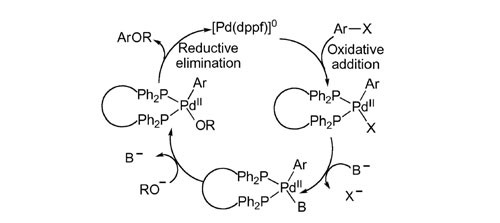Blog
Kelin has focused on the production and sales of activated carbon for decades. We are familiar with the application and common sense of activated carbon.
-
Take You To Understand Colin's Packaging Design
The importance of packaging of activated carbon products is mainly reflected in the following aspects:
-
Do You Know The Reasons For The High Price Of Gold Recovery Activated Carbon?
The reasons for the high price of gold recovery activated carbon are mainly related to its special performance, preparation process and industry demand, which include the following aspects:
-
How To Choose The Right Activated Carbon For Gold Recovery
Selecting activated carbon suitable for gold recovery requires comprehensive consideration of its physical and chemical properties, process conditions and economics. The following are the key steps and precautions:
-
Let Me Show You What Palladium Carbon Can Reduce?
Palladium carbon is a catalyst that is usually used in the hydrogenation reaction of organic compounds. However, palladium carbon itself is not a reducing agent, and it cannot directly reduce other substances. However, by interacting with certain substances, palladium carbon can promote the reduction reaction. The following will introduce the application of palladium carbon in reduction reactions:
-
What Is Palladium Carbon Hydrogenation Reaction?
Palladium carbon hydrogenation reaction is an important organic chemical reaction, which is widely used in chemical processes such as catalytic hydrogenation, dehydrogenation, dehalogenation, oxidation, etc. Palladium carbon catalysts have high activity and selectivity, especially in some difficult hydrogenation reactions.
-
Can Carbon Molecular Sieves Be Used For Water Treatment?
Carbon molecular sieves can be used for water treatment. Carbon molecular sieves have high surface area and fine pore size, and can effectively adsorb and remove pollutants such as heavy metal ions, organic matter, and heavy metal ions in water,
-
Advantages and Disadvantages of Activated Carbon for Ozone Removal
Due to the adsorption of ozone by activated carbon, it is widely used in the field of ozone treatment, such as indoor air purifiers, industrial waste gas treatment devices, etc., to reduce ozone concentration and improve air quality.
-
Main Preparation Method of Bio Charcoal
Agricultural wastes such as rice straw, wheat straw, bean straw, corn straw and other high-fiber, low-level agricultural and forestry wastes can be used as the main raw materials for biochar.
-
The Adsorption Principle Of Dioxins By Activated Carbon
The adsorption of dioxins by activated carbon mainly depends on its unique pore structure. The pore structure of activated carbon includes specific surface area, pore volume and pore size distribution, which directly affect its adsorption performance for dioxins.
-
Which Type Of Activated Carbon Is Most Effective At Removing Dioxins?
Japanese scholars Hideki Tachimoto, Ikuo Abe and others pointed out that the specific surface area and pore volume of activated carbon are important factors affecting the adsorption of dioxin.
-
Why Rhodium Carbon Catalysts Widely Used in Pharmaceutical Synthesis
Rhodium carbon has a wide range of applications. It can be used in a variety of reactions such as the synthesis of organic matter, oxidation reactions, hydrogenation reactions, coupling reactions, etc.
-
Applications of Columnar Activated Carbon
Columnar activated carbon is mainly used in waste gas treatment, water treatment, solvent recovery and other fields.













